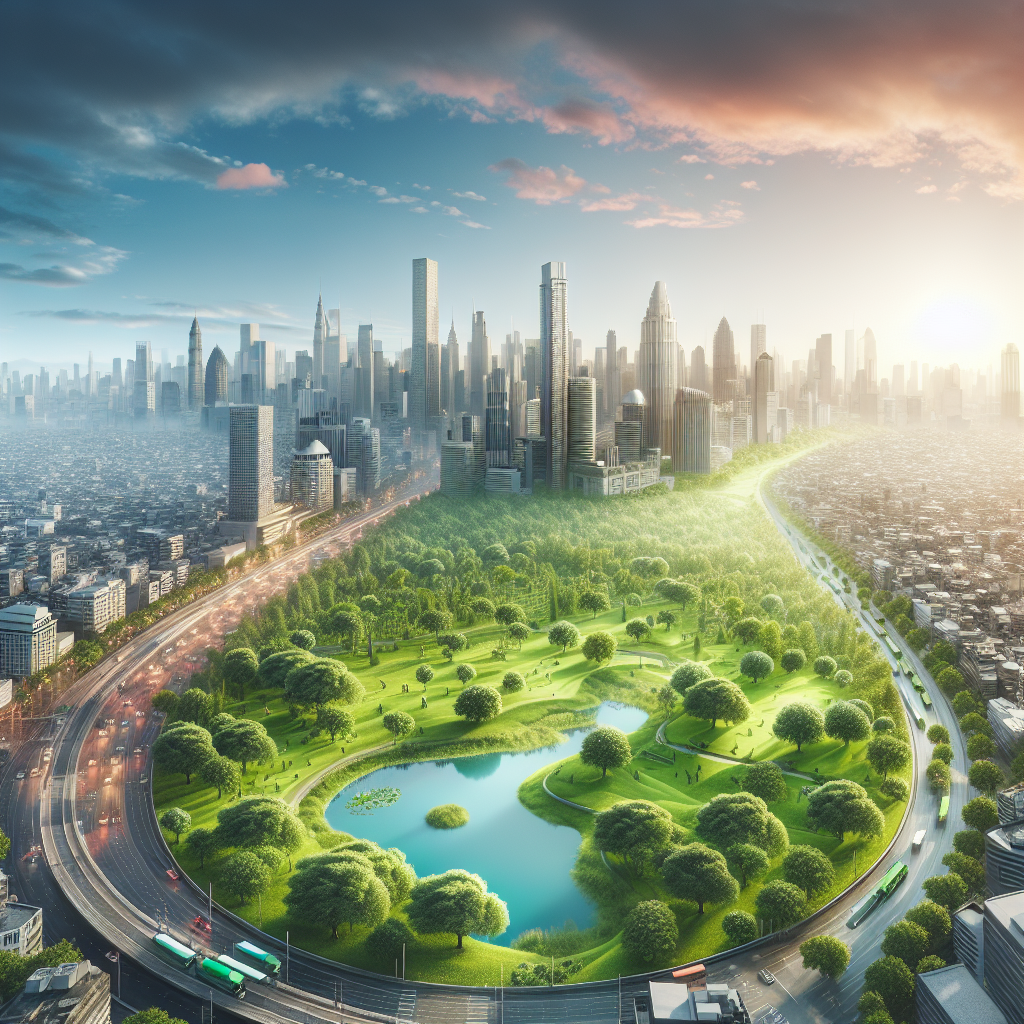Urban Green Spaces: Lungs of the City and Reducers of Carbon Footprints
In the heart of bustling cities, amidst the concrete jungle, urban green spaces emerge as vital oases offering not just respite for the city dwellers but also acting as crucial components in the ecological and climate modulation framework of urban environments. These verdant patches, ranging from sprawling parks to small community gardens, are often referred to as the “lungs of the city”. They play a pivotal role in enhancing urban biodiversity, improving air quality, and significantly contributing to the reduction of carbon footprints, thus combating the urban heat island effect and fostering sustainable urban living.
The Dual Role of Urban Green Spaces
1. Lungs of the City:
Urban green spaces are likened to lungs for a multitude of reasons. Primarily, they facilitate the process of photosynthesis, whereby plants absorb carbon dioxide—a predominant greenhouse gas—and, in turn, release oxygen. This natural filtration process not only purifies the air but also helps in mitigating pollution levels. In cities where the expanse of concrete and asphalt significantly outweighs natural landscapes, these green spaces are vital in maintaining ecological balance and ensuring healthier air quality.
Moreover, urban greenery contributes to the reduction of particulate matter in the air, which includes pollutants such as dust, smoke, and soot. Trees and plants act as natural filters, trapping these particles on their leaves and bark, thereby preventing them from polluting the air. This is especially crucial in urban areas where vehicular emissions and industrial activities exacerbate air pollution levels.
2. Reducers of Carbon Footprints:
Urban green spaces play a significant role in reducing the carbon footprint of cities. By absorbing carbon dioxide, they act as carbon sinks, thereby mitigating the impact of urbanization on climate change. The extensive root systems of trees and plants also help in stabilizing soil and enhancing its water retention capacity, which further contributes to the sequestration of carbon.
Additionally, the presence of green spaces in urban areas reduces the need for air conditioning during hot weather, as they have a cooling effect on their surroundings. This not only contributes to energy savings but also reduces greenhouse gas emissions associated with electricity generation. Furthermore, the strategic placement of trees can provide shade to buildings, further reducing the demand for cooling energy.
Enhancing Urban Livability and Sustainability
Beyond their environmental benefits, urban green spaces significantly contribute to the livability and sustainability of cities. They provide recreational areas for residents, promote physical activity, and serve as crucial habitats for urban wildlife. The psychological benefits are also profound, with studies indicating that access to green spaces can reduce stress and improve mental health.
The concept of sustainable urban planning increasingly incorporates the development and expansion of urban green spaces as a fundamental strategy in combating environmental challenges. Cities around the world are recognizing the value of integrating nature into urban landscapes, not just for aesthetic purposes but as a vital component of urban ecosystem services.
Challenges and Opportunities
Despite their numerous benefits, urban green spaces face challenges ranging from encroachment, inadequate funding, to maintenance issues. Rapid urbanization and the pressure to develop real estate can lead to the reduction of green spaces. Addressing these challenges requires innovative urban planning, community involvement, and policies that prioritize the preservation and expansion of urban greenery.
Opportunities lie in the adoption of green infrastructure solutions such as green roofs, vertical gardens, and the revitalization of derelict urban areas into green spaces. These approaches not only increase the area of greenery in cities but also enhance biodiversity and improve the well-being of urban populations.
FAQs
Q: How do urban green spaces reduce the urban heat island effect?
A: Through the process of transpiration and by providing shade, urban green spaces cool the surrounding air, thus reducing the urban heat island effect, which is the temperature difference between urban areas and their rural surroundings.
Q: Can urban green spaces really make a significant impact on carbon reduction?
A: Yes, while a single green space may have a limited impact, collectively, urban green spaces can absorb a significant amount of carbon dioxide, thereby contributing to the reduction of a city’s overall carbon footprint.
Q: How can cities increase their urban green spaces?
A: Cities can increase their green spaces by implementing policies that prioritize green space in urban planning, encouraging the development of green roofs and vertical gardens, and by converting underutilized or derelict areas into parks and gardens.
Q: What are the social benefits of urban green spaces?
A: Urban green spaces promote community interaction, encourage physical activity, reduce stress, and can even lower crime rates by fostering a sense of well-being and community ownership.
Q: How can individuals contribute to the development of urban green spaces?
A: Individuals can contribute by participating in local community garden projects, advocating for green space development in their communities, and by practicing environmentally responsible behaviors that support the sustainability of urban green spaces.
In conclusion, urban green spaces are not just aesthetic enhancements but are essential components of urban ecosystems that play a significant role in improving air quality, reducing carbon footprints, and enhancing the livability and sustainability of cities. As the world continues to urbanize, the integration of green spaces into urban planning becomes not just beneficial but essential for the well-being of both the planet and its urban inhabitants.

